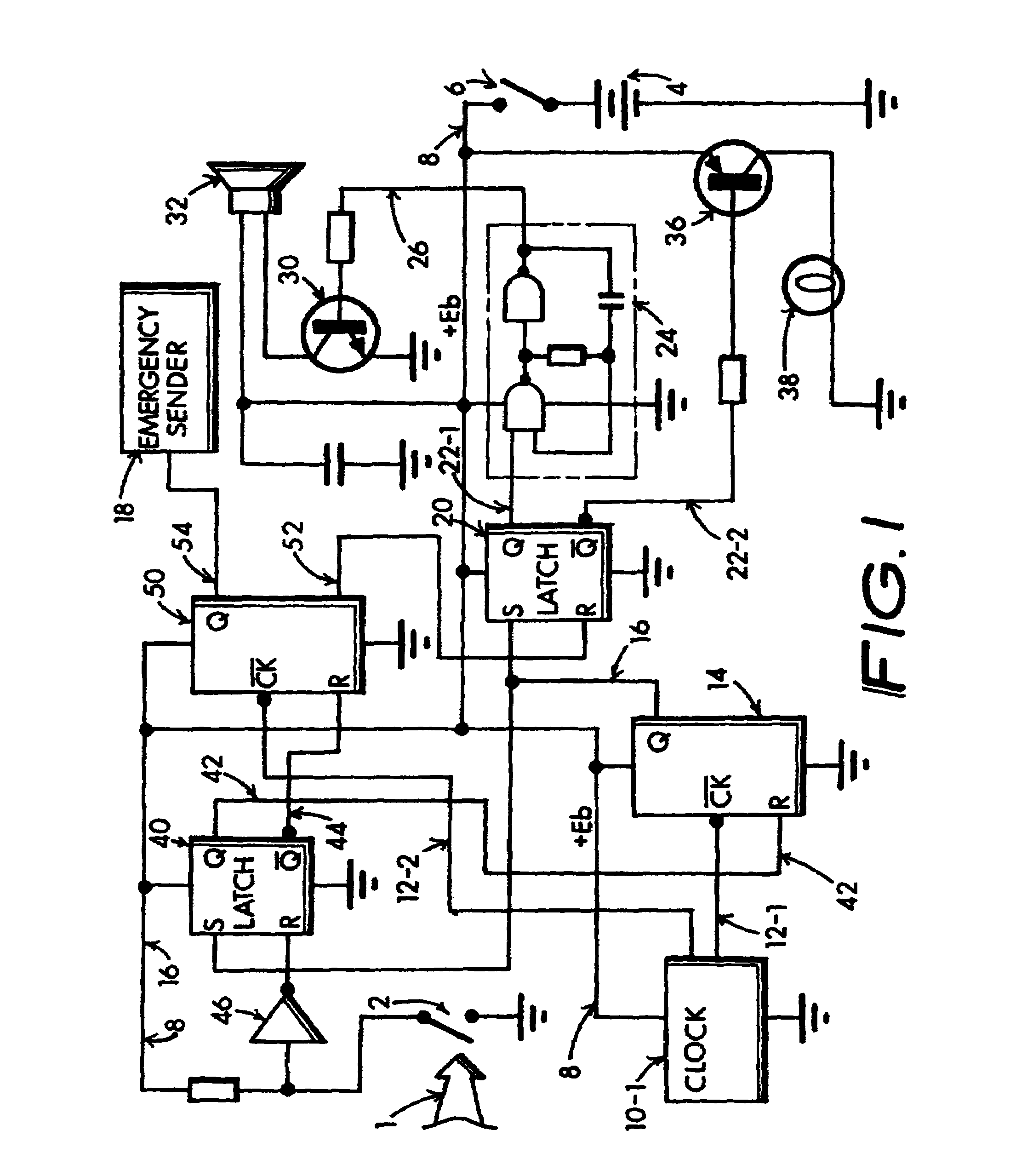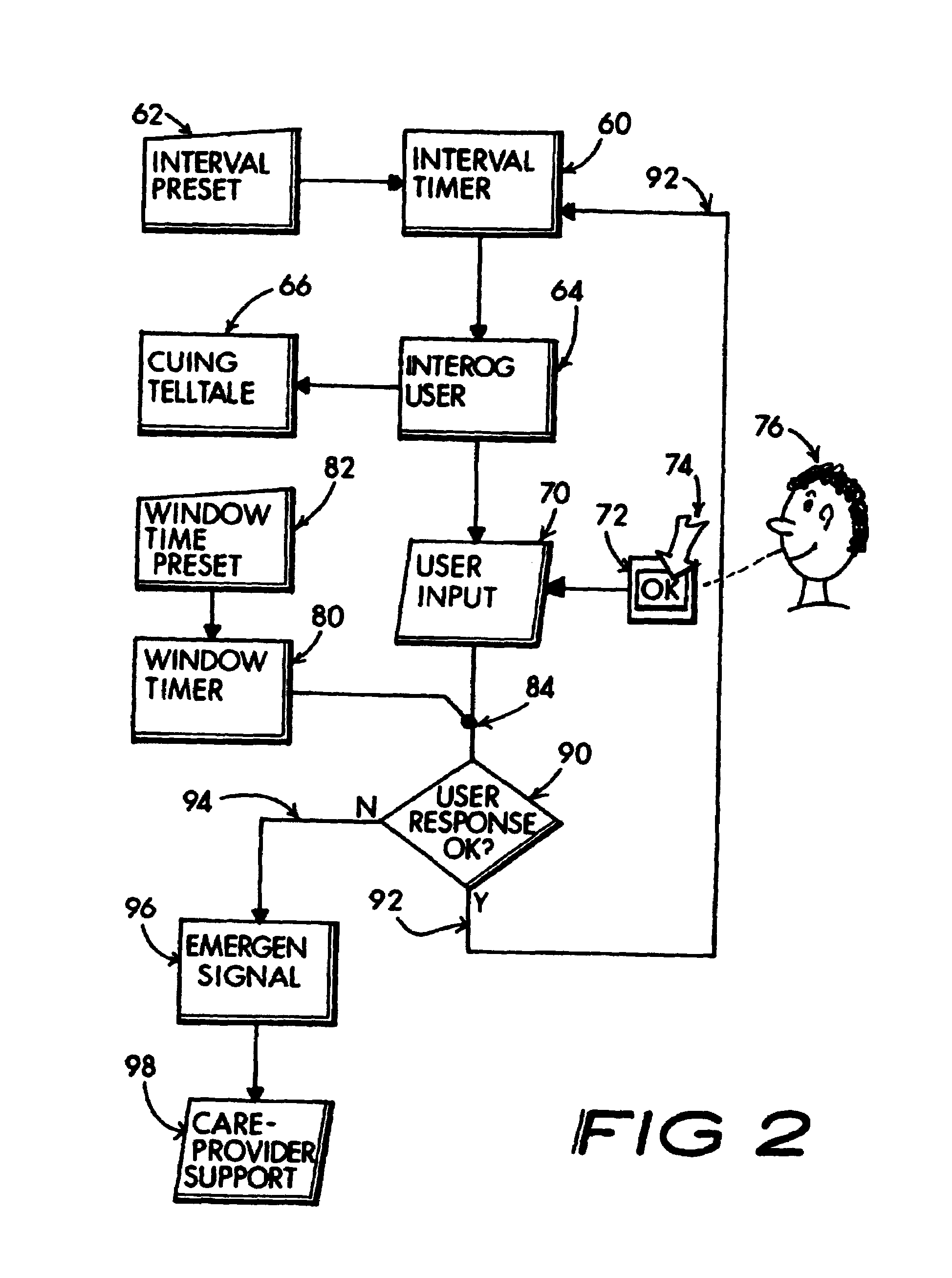One of the objectionable consequences of living alone is realizing that “something awful” including natural death may happen.
More urgently, a person living alone may experience a life-threatening health problem such as a heart
attack,
stroke or seizure and the event may go unnoticed for hours or even days, without a care-provider knowing.
The result may be death or permanent disability for a person who, if his circumstance had been noticed sooner, may have been saved from death,
brain damage or other debilitating conditions.
When a person lives alone in an
isolated environment, even a lesser impairment, such as having fallen down and broken a leg may go unnoticed and unaided by others.
The shortfall of this approach is that it assumes that the needy party is in condition to in fact make the emergency call.
However, such an assumption is invalid if a
stroke, seizure or heart attack occurs.
Nor may the assumption be valid in the event of a physical mishap, such as when an elderly person falls and breaks a hip-joint.
There are countless other injurious situations where a handicap, debilitant injury, or mind altering event may limit or even fully prevent the victim from “calling 911” or a care-provider.
However, such dependence on having the telephone “with you” still overlooks one of the main problems which may befall an elderly or infirm person living alone.
That central issue is manifested in a situation where sudden attack, such as a stroke, a seizure or a sudden fall which knocks the user out may thwart any possibility for hailing help over the telephone, even if it is in reach.
In many life-threatening situations,
confusion reigns and the victim is simply not able to make the necessitous call for help.
Wireless telephones are relatively complicated and difficult to use (in part due to their usual diminutive size), if you put yourself in the place of the needy user and particularly a handicapped or elderly person.
Even
cordless telephones are difficult for confused or elderly users.
Both cellphones and
cordless telephones suffer from battery failure, especially when they are used separate from their “
docking station” (recharger) and their regular recharge is overlooked.
Furthermore the needy user often “forgets” to push the
panic button, often due to simple
confusion or maybe through sheer
anxiety.
An onset of a stroke or heart attack often leaves the user in a
panic state, confused and grossly weakened.
Trembling fingers may not be controllable.
In any event, a strong likelihood prevails that the user may not be able to utilize the perceived benefit of the telephone access just at the time when the situation is grave and the need is definitively the greatest.
Potential users often find that many communities simply prohibit or discourage the use of “
panic button” callers to “call the police” or “911”, due to a propensity for inadvertent false alarms which may place
emergency personnel and the public at unnecessary risk in responding to an accidentally initiated “
false alarm” call.
In some towns, the false dialing of 911 by an autodialer can result in a substantial penalty fine.
The principal limitation remains.
A further drawback to a “panic button” actuated situation alarm is that the panic-button “sender” device must be worn at all times to be readily available to a user when it may be most needed.
A panic button “left in another room”, on a bedside stand or in the dresser drawer across the room is often as bad as not having one!
Panic buttons may also be lost.
Sometimes, the signal sent by the panic button is not strong enough to be satisfactorily received by a remote.
For example, a user who decides to work “out back in the garden” may inadvertently be out of range of the remote
receiver and yet it is precisely this sort of exceptional situation (e.g., stressful working in the heat while in the garden, etc.) that may lead to the need for the panic button due to heart attack, stroke or even a fall-down injury.
A most significant limitation of the panic button approach is that the panic button must, in fact, “be intentionally and manually operated”.
As a result of the waiting, the condition may quickly worsen to a level where the victim can not, forgets or otherwise fails to press the panic button.
Strokes and various kinds of diabetic, epileptic and
substance abuse (or alcoholic) seizures are known to result in this potentially fatal lack of capacity for even rudimentary action, e.g., merely “pressing the panic button”.
Consequentially, the user or victim may die or suffer irreparable
brain damage before “help” otherwise avails itself, in absence of the user having initiated the emergency signal.
Automatically arming of the
system when the user is at work or otherwise covered is not needed and hence undesirable.
When the
system is not armed, the user is not interrogated and a risk condition may go unnoticed by others.
Conversely, if more than an hour passes, there may be a problem or the user may have simply forgotten to respond.
On the other hand, if the switch is not timely reset after the local reminder alarm goes-off, a presumption may reasonably be made that a significant problem may have occurred.
Failure to reply with the encoded return signal will, on the other hand establish that something may be wrong.
Auto-dialed telephone numbers for
emergency situations lack assurance that the auto-dialed party actually “receives” the crisis message.
The result is that the at risk
client's emergency call may go unnoticed.
 Login to View More
Login to View More  Login to View More
Login to View More 


